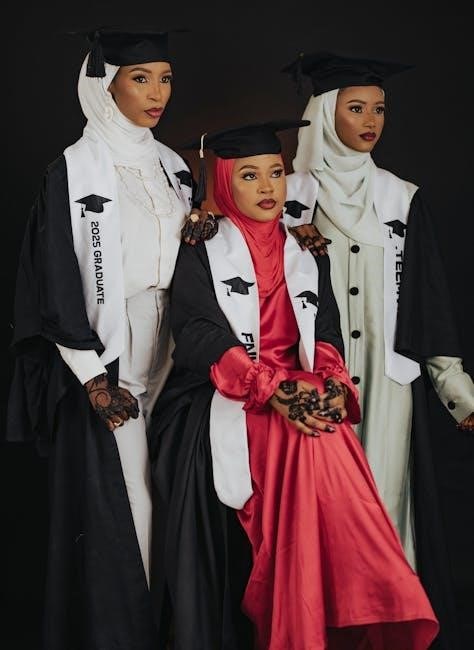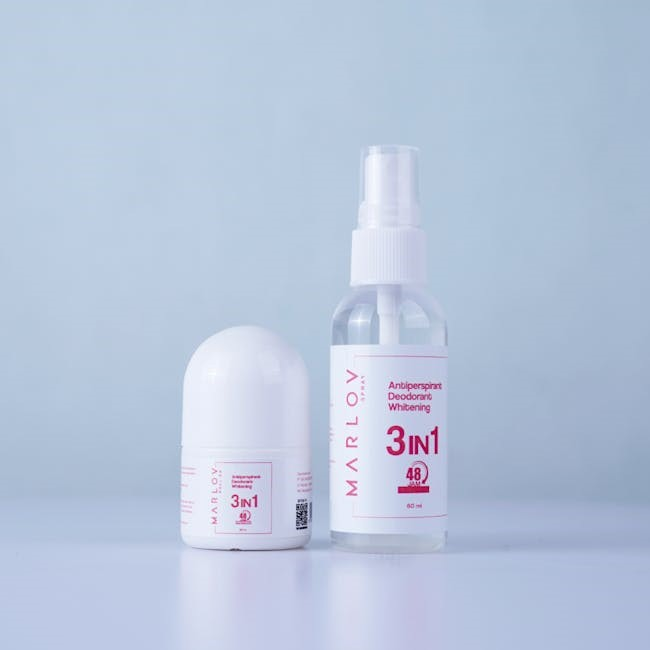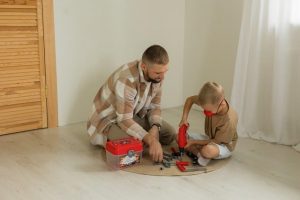The Early Childhood Environment Rating Scale‚ Third Edition (ECERS-3)‚ is a widely used observational tool assessing the quality of early childhood environments‚ focusing on space‚ activities‚ and interactions to promote learning and development․
1․1 What is ECERS-3?
The Early Childhood Environment Rating Scale‚ Third Edition (ECERS-3)‚ is a comprehensive observational tool designed to assess the quality of early childhood environments․ It evaluates various aspects of a child care setting‚ including the physical environment‚ curriculum‚ and interactions between staff and children․ Developed by Thelma Harms‚ Richard M․ Clifford‚ and Debby Cryer‚ ECERS-3 is widely used by educators‚ researchers‚ and policymakers to ensure high-quality care and education for young children․ The scale focuses on promoting cognitive‚ social-emotional‚ and physical development while maintaining health and safety standards․ By providing a detailed framework‚ ECERS-3 helps programs identify strengths and areas for improvement‚ ensuring optimal learning environments for children․
1․2 History and Development of ECERS-3
The Early Childhood Environment Rating Scale‚ Third Edition (ECERS-3)‚ has its roots in the original ECERS‚ introduced in the 1980s․ Developed by Thelma Harms‚ Richard M․ Clifford‚ and Debby Cryer‚ the scale has undergone significant revisions to reflect evolving best practices in early childhood education․ The third edition retains the core focus on observational assessment while introducing enhanced criteria for interactions‚ materials‚ and program practices․ ECERS-3 builds on its predecessors by incorporating research-based updates‚ ensuring it remains a leading tool for evaluating and improving early childhood environments․ Its development aligns with global efforts to enhance the quality of care and education for young children‚ making it a widely respected and utilized resource in the field․
1․3 Purpose and Scope of ECERS-3
The purpose of the Early Childhood Environment Rating Scale‚ Third Edition (ECERS-3)‚ is to assess the quality of early childhood programs by evaluating factors that influence children’s development․ Its scope encompasses the physical environment‚ curriculum‚ and interactions‚ ensuring comprehensive coverage of key areas․ The scale aims to identify strengths and areas for improvement‚ guiding professionals in creating enriching environments․ By focusing on observable aspects‚ ECERS-3 provides actionable insights for educators and administrators‚ supporting the implementation of best practices․ Its objective is to enhance the overall quality of care and education‚ ensuring optimal conditions for children’s cognitive‚ social‚ emotional‚ and physical growth․

Key Areas Assessed by ECERS-3
ECERS-3 evaluates critical aspects of early childhood environments‚ including space‚ furnishings‚ personal care routines‚ language‚ literacy‚ learning activities‚ and interactions‚ ensuring a holistic assessment of program quality․
2․1 Space and Furnishings
ECERS-3 assesses the physical environment‚ focusing on space and furnishings to ensure they support children’s learning and development․ It evaluates the layout‚ comfort‚ and accessibility of areas‚ ensuring materials are organized to promote exploration․ The scale checks for sufficient space for movement‚ storage‚ and well-defined activity areas․ Safety and appropriateness of furniture are also considered‚ with an emphasis on creating an environment that fosters independence and engagement․ Proper arrangement of furnishings is seen as critical for facilitating social interactions and learning activities‚ aligning with best practices in early childhood education․ This section ensures the environment is not only functional but also inviting and conducive to children’s overall growth․
2․2 Personal Care Routines
ECERS-3 evaluates personal care routines to ensure they promote children’s health‚ safety‚ and well-being․ It assesses the effectiveness of hygiene practices‚ such as handwashing and diapering‚ ensuring they are conducted safely and respectfully․ The scale also examines how staff support children in developing self-care skills‚ like using the toilet or washing hands independently․ Mealtime practices are reviewed for cleanliness‚ supervision‚ and the encouragement of social interaction․ The environment’s setup for personal care‚ including the availability of age-appropriate sinks‚ toilets‚ and changing areas‚ is also considered․ The goal is to ensure that personal care routines are not only safe but also foster independence and positive habits in young children․ This section emphasizes the importance of balancing health and safety with child-centered practices․
2․3 Language and Literacy
The ECERS-3 evaluates the quality of language and literacy practices in early childhood settings; It assesses the availability and accessibility of books‚ reading materials‚ and writing tools‚ ensuring they are age-appropriate and diverse․ The scale also examines how staff engage children in literacy activities‚ such as reading aloud and encouraging conversations․ Opportunities for children to develop vocabulary‚ storytelling‚ and comprehension skills are observed․ Additionally‚ the environment’s support for language development‚ including labels‚ charts‚ and accessible writing materials‚ is evaluated․ The goal is to ensure that the setting fosters a love for reading and lays a strong foundation for future literacy skills․ This section emphasizes the importance of intentional teaching and the integration of language and literacy into daily routines․
2․4 Learning Activities
ECERS-3 evaluates the quality and variety of learning activities provided to children‚ focusing on their ability to promote cognitive‚ social‚ and physical development․ The scale assesses the availability of materials that encourage problem-solving‚ creativity‚ and exploration‚ such as puzzles‚ building blocks‚ and art supplies․ It also examines how activities are structured to support children’s interests and developmental needs․ Observations include the integration of science‚ math‚ and dramatic play‚ as well as opportunities for children to engage in hands-on experiences․ The environment’s support for active learning‚ including the role of adults in facilitating and extending children’s play‚ is also considered․ This section emphasizes the importance of providing diverse and engaging activities that foster curiosity and skill development․
2․5 Interaction

ECERS-3 places a strong emphasis on the quality of interactions between children and adults‚ as well as among children themselves․ Observations focus on how adults engage with children‚ including verbal and non-verbal communication‚ responsiveness‚ and support for social-emotional development․ The scale evaluates whether adults encourage children’s language development‚ problem-solving‚ and cooperation․ Positive interactions‚ such as praise‚ encouragement‚ and conflict resolution‚ are key components․ Additionally‚ the environment’s support for peer interactions‚ including opportunities for collaborative play and mutual respect‚ is assessed․ This section highlights the importance of fostering a nurturing and inclusive atmosphere where interactions promote children’s social‚ emotional‚ and cognitive growth․ Effective interaction strategies are seen as critical for enhancing the overall quality of the early childhood setting․

Administration and Scoring of ECERS-3
ECERS-3 is administered by trained evaluators who assess early childhood environments based on specific criteria during scheduled visits‚ with scoring providing actionable feedback for improvement․
3․1 Observational Methods
ECERS-3 employs structured observational methods to assess early childhood environments․ Trained evaluators conduct site visits‚ observing classroom settings‚ materials‚ and interactions․ Observations focus on real-time activities‚ capturing how spaces are organized and how staff engage with children․ Tools like checklists and rating scales are used to document findings․ Observers evaluate the availability and use of materials‚ the quality of adult-child interactions‚ and the overall learning environment․ This approach ensures a comprehensive understanding of program quality‚ providing actionable insights for improvement․ Observations are conducted during typical daily routines‚ ensuring authenticity and reliability in the assessment process․ This method is central to ECERS-3‚ offering a detailed and objective evaluation of early childhood settings․
3․2 Scoring Criteria
ECERS-3 uses a 7-point scoring scale to evaluate the quality of early childhood environments․ Scores range from 1 (inadequate) to 7 (excellent)‚ with specific criteria for each rating․ Items are assessed based on their presence‚ quality‚ and effectiveness in supporting children’s development․ For example‚ a score of 1 might indicate a lack of necessary materials‚ while a score of 7 reflects optimal conditions․ Evaluators consider factors like the organization of space‚ availability of learning materials‚ and staff interactions․ The scoring criteria are detailed in the ECERS-3 manual‚ providing clear benchmarks for each item․ This system ensures consistency and reliability in assessing program quality‚ helping programs identify strengths and areas for improvement․ The scoring process is designed to be objective and aligned with best practices in early childhood education․

3․3 Interpreting Results
Interpreting ECERS-3 results involves understanding the scoring to identify program strengths and areas for improvement․ Scores are categorized into ranges‚ with higher scores indicating better quality․ Programs scoring 5-7 are considered high-quality‚ while scores below 3 indicate inadequate environments․ Results highlight specific areas needing attention‚ such as space organization or material availability․ The ECERS-3 manual provides guidelines to interpret scores and create improvement plans․ By analyzing results‚ programs can prioritize enhancements‚ ensuring a supportive environment for children’s development․ This data-driven approach helps align practices with best practices‚ fostering continuous quality improvement․ Interpretation is a critical step in leveraging ECERS-3 for enhancing early childhood education settings effectively․

Benefits and Importance of ECERS-3
ECERS-3 enhances program quality by identifying strengths and areas for improvement‚ aligning with best practices‚ and supporting informed decision-making to foster optimal early childhood development and learning environments․
4․1 Improving Quality in Early Childhood Programs
The ECERS-3 is a powerful tool for enhancing the quality of early childhood programs by providing a comprehensive framework for assessing and improving the learning environment․ It evaluates key areas such as space‚ furnishings‚ personal care routines‚ language‚ literacy‚ and learning activities‚ ensuring they meet high standards․ By identifying strengths and areas for improvement‚ programs can implement targeted strategies to create a more supportive and engaging environment for children․ This tool also emphasizes the importance of interactions between children and adults‚ fostering social-emotional development․ Regular use of ECERS-3 helps programs align with best practices‚ leading to better outcomes for children and continuous quality improvement over time․
4․2 Role in Research and Policy

ECERS-3 plays a significant role in research and policy by providing a standardized tool to assess early childhood environments․ Its comprehensive framework allows researchers to measure program quality across diverse settings‚ informing studies on child development and education․ Policymakers use ECERS-3 data to shape regulations and allocate resources‚ ensuring equitable access to high-quality care․ By aligning with best practices‚ ECERS-3 supports the development of policies that prioritize child well-being and learning․ This tool bridges research and policy‚ enabling evidence-based decision-making and fostering systemic improvements in early childhood education․ Its widespread adoption underscores its value in advancing both research and policy agendas focused on enhancing early learning environments․
4․3 Aligning with Best Practices
ECERS-3 aligns with best practices in early childhood education by emphasizing a child-centered approach‚ fostering a supportive environment‚ and promoting holistic development․ It encourages programs to provide diverse materials and activities that cater to various learning styles․ The scale highlights the importance of intentional teaching‚ positive interactions‚ and inclusive practices․ By focusing on health‚ safety‚ and well-being‚ ECERS-3 ensures that programs meet essential standards for child development․ Its guidelines are consistent with recommendations from leading educational organizations‚ making it a valuable resource for educators seeking to enhance program quality․ This alignment supports the creation of nurturing environments that promote children’s social‚ emotional‚ cognitive‚ and physical growth effectively․

Resources and Support for ECERS-3
ECERS-3 offers supplementary materials‚ training‚ and professional development to support effective implementation․ COVID-19 guidance is also provided to ensure safe and adaptive early childhood environments․
5․1 Supplementary Materials
ECERS-3 provides a range of supplementary materials to enhance its implementation․ These include detailed scoresheets‚ handwashing guidance‚ diapering procedures‚ meal guidelines‚ and playground safety checklists․ Additional resources such as supplementary notes and updated editions (e․g․‚ ITERS-3‚ FCCERS-3) are available to support various early childhood settings․ These materials are designed to ensure consistency and quality in assessments․ They also offer practical tools for program improvement‚ aligning with best practices in early childhood education․ Furthermore‚ specific COVID-19 guidance is included to address safety protocols and adaptions for modern challenges․ These resources are accessible online‚ making it easier for educators and administrators to reference and apply them effectively․ Respecting copyright laws is essential when using these materials‚ as they are protected under intellectual property regulations․
5․2 Training and Professional Development
ECERS-3 offers comprehensive training and professional development opportunities to equip educators with the skills needed to effectively use the scale․ Workshops‚ online courses‚ and institutes are available‚ focusing on observational techniques‚ scoring criteria‚ and interpreting results․ These trainings emphasize understanding the assessment process and applying it to improve program quality․ Additionally‚ resources like the ECERS-3 Concepts Training for Preschool Teachers provide in-depth guidance․ These opportunities are designed to enhance educators’ abilities to create supportive learning environments․ By participating in professional development‚ educators can gain practical strategies to align their practices with ECERS-3 standards‚ ensuring high-quality care and education for young children․ Ongoing training supports continuous improvement and staying updated on best practices in early childhood education․
5․3 COVID-19 Guidance
ECERS-3 provides specific COVID-19 guidance to support early childhood programs in adapting to pandemic-related challenges․ This guidance emphasizes maintaining health and safety standards while ensuring quality education․ It includes recommendations for cleaning protocols‚ social distancing‚ and personal protective equipment (PPE) usage․ The resources help programs modify their environments to meet safety requirements without compromising educational quality․ Additionally‚ the guidance addresses how to integrate health practices into daily routines‚ such as handwashing and sanitizing materials․ This support enables educators to assess and improve their environments while adhering to COVID-19 precautions‚ ensuring a safe and effective learning space for children․ The guidance aligns with ECERS-3 standards‚ focusing on both safety and developmental support during unprecedented times․

ECERS-3 Materials Checklist
The ECERS-3 Materials Checklist ensures programs have essential items for fostering children’s development‚ including music‚ art‚ science‚ and creative materials‚ aligned with quality standards․ It provides a detailed inventory guide to support diverse learning experiences‚ encouraging exploration and skill-building across various domains․ This checklist helps educators assess and enhance their classroom resources effectively‚ promoting a stimulating and inclusive environment that meets ECERS-3 criteria for early childhood education․ By organizing materials thoughtfully‚ programs can create engaging spaces that cater to children’s cognitive‚ social‚ and emotional growth‚ ensuring a well-rounded educational experience․
6․1 Music and Movement Materials
Music and movement materials are essential components in the ECERS-3 checklist‚ ensuring children have access to tools that foster creativity and physical expression․ At least three music materials‚ such as instruments or recorded music‚ are required‚ with a minimum of 10 instruments or one per child during group activities․ These materials should be accessible‚ age-appropriate‚ and varied to encourage exploration․ Movement tools‚ like dance ribbons or balance beams‚ are also recommended to promote gross motor skills․ Proper storage and organization of these materials are emphasized to ensure safety and ease of use․ The inclusion of these items supports children’s cognitive‚ social‚ and physical development‚ aligning with ECERS-3’s focus on creating a stimulating and inclusive environment for early learners․
6․2 Art and Creative Materials
Art and creative materials play a vital role in fostering children’s imagination and self-expression․ ECERS-3 emphasizes the availability of diverse art supplies‚ such as paints‚ crayons‚ markers‚ and colored pencils‚ ensuring they are accessible and well-organized․ Materials like paper‚ glue‚ scissors‚ and tape should be age-appropriate and plentiful․ Natural materials‚ such as leaves or fabric scraps‚ are also encouraged to inspire creativity․ Storage and display of artwork are important‚ as they promote a sense of accomplishment and encourage further exploration․ The environment should support independent use of materials‚ allowing children to explore and express their ideas freely․ This focus on art and creativity aligns with ECERS-3’s goal of nurturing holistic development in early childhood settings․
6․3 Science and Nature Materials
Science and nature materials are essential for fostering curiosity and exploration in early childhood settings․ ECERS-3 highlights the importance of providing a variety of hands-on materials that encourage children to engage with the natural world․ These include magnifying glasses‚ bug catchers‚ plants‚ and natural objects like rocks‚ shells‚ and leaves․ Collections of science-related toys‚ such as simple magnets‚ prisms‚ and sorting tools‚ are also recommended․ Access to water play materials‚ like funnels and measuring cups‚ supports scientific inquiry․ These resources should be well-maintained‚ safe‚ and accessible‚ allowing children to explore and learn through discovery․ The presence of such materials aligns with ECERS-3’s emphasis on creating environments that promote active learning and cognitive development․

Using ECERS-3 for Self-Assessment and Quality Improvement
ECERS-3 supports self-assessment by identifying strengths and areas for improvement‚ enabling programs to create targeted action plans and monitor progress effectively․
7․1 Self-Assessment Process
The ECERS-3 self-assessment process involves reflecting on program quality through observational tools and criteria․ Programs evaluate their environment‚ curriculum‚ and interactions using the ECERS-3 materials checklist and scoring guide․ This process helps identify strengths and areas needing improvement‚ fostering a culture of continuous quality enhancement․ By systematically reviewing space‚ activities‚ and staff-child interactions‚ programs can align their practices with best practices․ Regular self-assessment supports accountability and informed decision-making‚ ensuring a nurturing and effective learning environment for young children․
7․2 Developing an Improvement Plan
Developing an improvement plan using ECERS-3 involves setting actionable goals based on assessment results․ Programs identify priority areas needing enhancement‚ such as space organization or staff-child interactions․ Goals are made measurable and time-bound‚ ensuring clear benchmarks for progress․ Teams collaboratively create strategies‚ allocate resources‚ and assign responsibilities to address gaps․ The plan aligns with ECERS-3 standards and best practices‚ focusing on enhancing the learning environment and interactions․ Regular reviews and adjustments ensure the plan remains effective․ This structured approach helps programs systematically improve quality‚ fostering a supportive and engaging setting for children’s development․
7․3 Monitoring Progress
Monitoring progress with ECERS-3 ensures continuous improvement by tracking changes and identifying areas needing further attention․ Regular self-assessments and observations help programs evaluate advancements and stay aligned with quality standards․ Tools like checklists and tracking sheets are used to document improvements and setbacks․ Progress is reviewed through staff discussions and shared with stakeholders to maintain transparency․ By consistently monitoring‚ programs can refine their strategies‚ celebrate successes‚ and address challenges promptly․ This iterative process supports sustained quality enhancement and ensures the environment remains conducive to children’s development․ Regular updates and adjustments to the improvement plan are essential for achieving long-term goals and maintaining high standards․


